2 октября, 2017 | Match & Coarse | Tips | Articles | News
0 CommentsDon’t neglect the pole when looking to fish on a river, the advantages it brings might just surprise you, says Mark Perkins…
Think of fishing on a river.
Clear, fast-flowing water, running over large beds of streamer weed and pea gravel and your immediate thoughts no-doubt turn to breaking out the stick float kit.
But how many of you would reach for their pole first?
When it comes to long trotting a stick float, there is unarguably a craft, a skill and an art to perfecting precise presentation.
Get it right and there are few better feelings in angling than when that small orange dome slides under the water and a thump of a kicking, bucking fish can be felt through the rod.
I reckon pole fishing on running water though offers a distinct number of advantages that a more-traditional running line approach cannot even come close to.
Having spent a lifetime fishing on rivers like the Trent and (regards today’s session) the Soar there are definite times the pole will out fish the stick float ten-fold.
Don’t get me wrong, I love trotting and running line fishing on rivers, but don’t let that blinker you as it will cost you fish in the long run.
So, today I’ve come to a ‘members-only’ section of the Soar — Abbey Meadow — controlled by Loughborough Soar Angling to prove a point!
Advantages of the pole
As with stillwater fishing, the pole offers the angler supreme accuracy. Regards river fishing, this means I can drop the rig on a six-pence, through the weed, directly into the little channels or even push the rig right under the overhanging branches of the far bank foliage.
The problem with a stick float is that it can get hooked up on the weed, so ideally you are looking for a clean weed-feed area of river.
When the river is flowing crystal clear, like it is today, the fish are reluctant to sit and feed in these areas as they leave themselves venerable to predation. On the other hand, using a bomb or feeder, you again run the risk of even the shortest hooklink getting snagged up on the trailing branches and/or weed beds.
The second advantage of the pole, particularly if fishing-to-hand, is if you encounter pike problems. You can very quickly pull the silverfish out of the water and swing them in, before old Esox has his wicked way and attacks your hard-won prize!
As with all things in life thought, it’s not all beer and skittles pole fishing on a river. Unlike a running line, you are limited to the distance you can trot downstream when pole fishing. But, as long as you prime and loosefeed the peg correctly, this shouldn’t be too much of a problem.
Choosing the right location
Looking for the ‘right’ place is paramount when river fishing.
Today, I’ve chosen a classic feature — a cattle drink. The great thing about areas like this is they are usually quite shallow on the inside, so you are able to wade out into the flow, placing your seat box on a platform. This enables you to get further across the river without having to fish too long, making things more difficult.
It rained most of yesterday, so the river is carrying around one-foot of extra water today. This has made conditions quite difficult but far from impossible. What it has created is two distinct areas to tackle. A large slack area across to the far bank and a pacey smaller-fish line, down the central track.
I’ll look to target the big fish in the slack. The problem with big fish fishing is that they won’t tolerate being fished for all day. Similar to a bonus-fish line on a canal, you need to loosefeed plenty of bait in this area, then leave it to allow the fish to come over the feed and gain their confidence.
Being clear, these bigger fish shy away from having a pole over their heads too, so it is best fished in small bursts. You’ll need to nurture the swim, you need to, feed, leave, snatch a fish or two and leave!
The inside line, at around seven metres is my small/silverfish line. Here I’m planning to fish seven sections to hand with a six-meter long rig, trotting a pole float down river over a bed of groundbait.
An approach like this I would describe as a typical match man’s approach, but I like to give myself a couple of options to alternate between over the day.
On the ‘big fish’ line
Looking to fish into the big slack close to the opposite bank, there is little room for finesse.
I’ve matched my purple Hydrolastic to a mainline of 0.20mm and a hooklink of 0.18mm with a size 10 hook.
This is my typical rig set-up if barbel, chub or big perch are a possibility. It all sounds very heavy and pole-crunching, but add weed beds and snags to the big-fish recipe and you will end up testing every inch of your tackle to its limits at times. With species like barbel and chub, you need to dictate terms to them, not vice versa, as they will find every snag they can.
I’ve set-up a 2g rig, which is much bigger than you would use in the same depth of water on a stillwater — the swim is six-foot deep today. The reason being that even though I’m fishing into a slack, the water is still quite swirly, so you need a heavy float that will ride the flow better. Also, the heavier float allows for more shotting, which means I can bomb my hookbait down to the river bed where he big fish will be feeding.
The shotting pattern is a 1.75g in-line olivette — the semi-fixed ones are no good as they catch on the weed and ping off the line too easily — around 18-inches above the hook, then I place a single No8 and No10 droppers down the line to give the hookbait a natural fall through the final foot-and-a-half.
To kick off the big fish line, I place three chopped lobworms into a bait dropper, before filling it up with casters and a few grains of Dynamite Baits’ corn.
Feeding three of these full bait droppers at the start of the session, I look to introduce approximately three-quarters of a pint of loosefeed.
The bait dropper means accuracy of baiting and little disturbance, so as not to spook any fish already in the area.
I also look to feed an area around a meter or more away from the snags and trees. The small amount of the choppy will then run under the trees, in the flow, bringing the fish to me. If I go to them straightway, I could catch one early and risk spooking the rest of the shoal. As the session continues, I can drop the rig closer, but at the start it is best to keep well upstream.
The silverfish line
The set-up here is much lighter.
A pink Hydrolastic to a mainline of 0.14mm, a 0.12mm hooklink and a size 18 hook make up the rig. As I’m primarily targeting silverfish, I want a much subtler presentation on this line.
Again though, the float is stepped-up from what I’d use on a stillwater. I’ve got a 1g KC Carpa River on today.
In the five-foot deep swim, this gives me just enough weight to hold the rig back. If the float was too light, when I hold back, the bristle will lay almost flat in the flow, indicating the hookbait is being presented around half-depth or less. Conversely, if the rig is too heavy, the float will drag, giving poor presentation once again.
Ideally, the float ratio will be around 0.2g per foot as a starting point. After this, the final decision will depend upon the strength of flow so the rig presents as I want it to.
Just like the big fish rig, I place a 0.75g olivette 18-inches from the hook, with three No8s just below and two No11 dropper shot, so the hookbait has a natural fall over the final few inches. The olivette also enables me to ‘bomb’ the hookbait past any bleak in the upper layers.
To kick off this line, I start by balling in three large balls of Silver-X Roach Black, with a little hemp added. With the flow going right to left, the groundbait is fed at the eleven o’clock position on the clock face.
Placing the rig in at 12 o’clock, the float should have settled by the time it reaches the groundbait, I can them run the rig downstream, over any particles that have washed down.
Regards loosefeed, I’ll spray bronze maggots and hemp over this line.
I start fairly gently, feeding only three to four maggots at a time. If bites dry up later on, I’ll up this to 12 to 20 every run through, until the fish reappear, before again cutting back. This keeps the fish up in the head of the swim, actively looking for more feed.
After this, it is just a case of alternating and feeding the swims throughout the day.
The session
Having primed the big fish line, I landed a handful of small chub straightaway, before re-feeding and leaving it.
On to the small fish line, and apart from the initial pike problems I encountered at the start, it was soon a ‘bite a chuck’ from small dace, chub and roach all coming to a single or double maggot hookbait.
Back across to the slacks, I was able to land a couple of bonus chub, around 4lb each, a nice boost to the day’s bag.
It was when I went back on the small fish line that it all went wrong!
Again, a strong flurry of silvers came, one a bung, when the swim mysteriously died. Half a dozen trots later, the reason became apparent.
A short 45-minutes later, I finally scooped up a 5lb barbel, which had led me a very merry dance on the pink Hydrolastic and 0.12mm hooklink rig!
With two good chub, a 5lb barbel and around 20lb-plus of silverfish in the net, the day concluded very nicely.
It could be argued that I’d have got the barbel in faster on running line, but the pole probably allowed me to catch it in the first place.
Although I love my stick float fishing, never underestimate the power of the pole when tackling running water swims.
The presentation, accuracy and precision is often so much better, it will often show in your final weight.
Mark Perkins






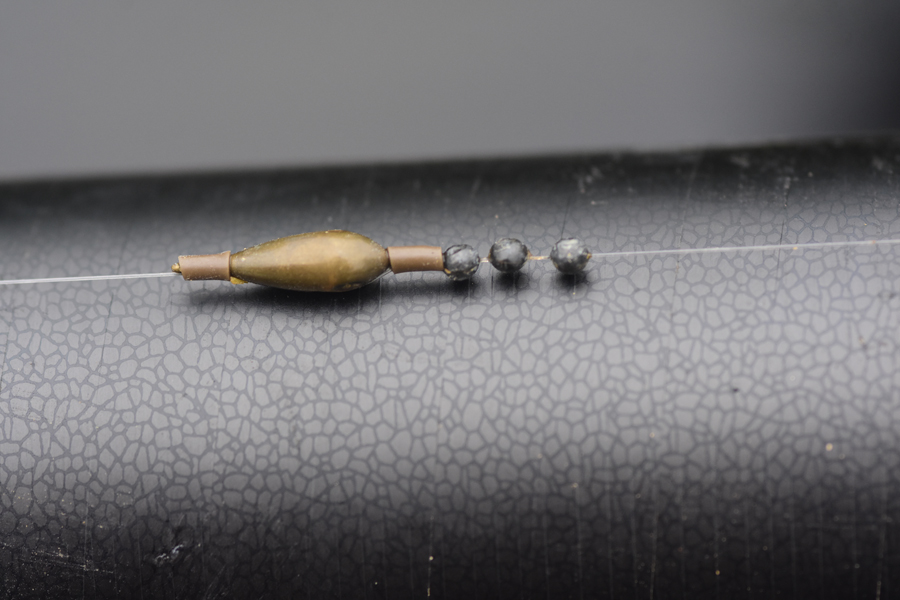
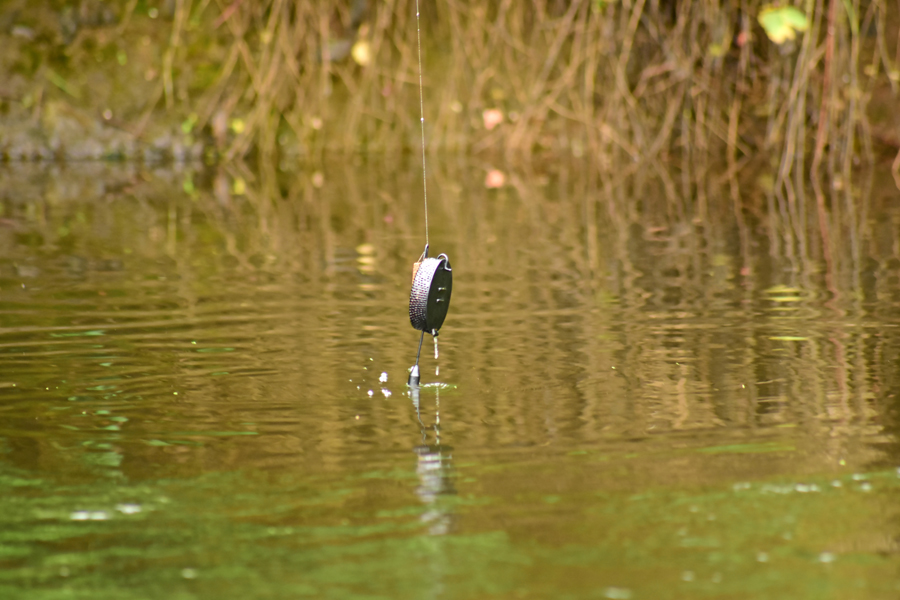
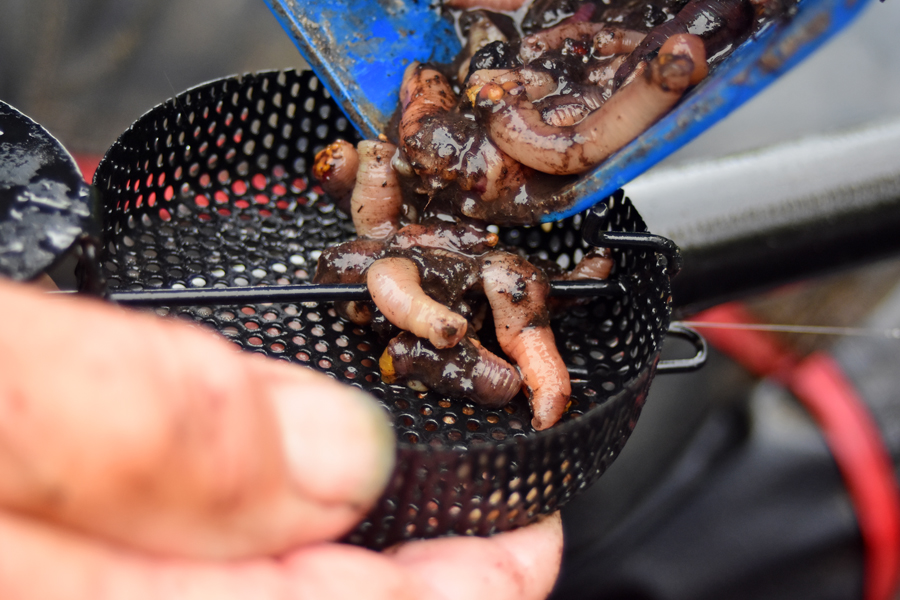



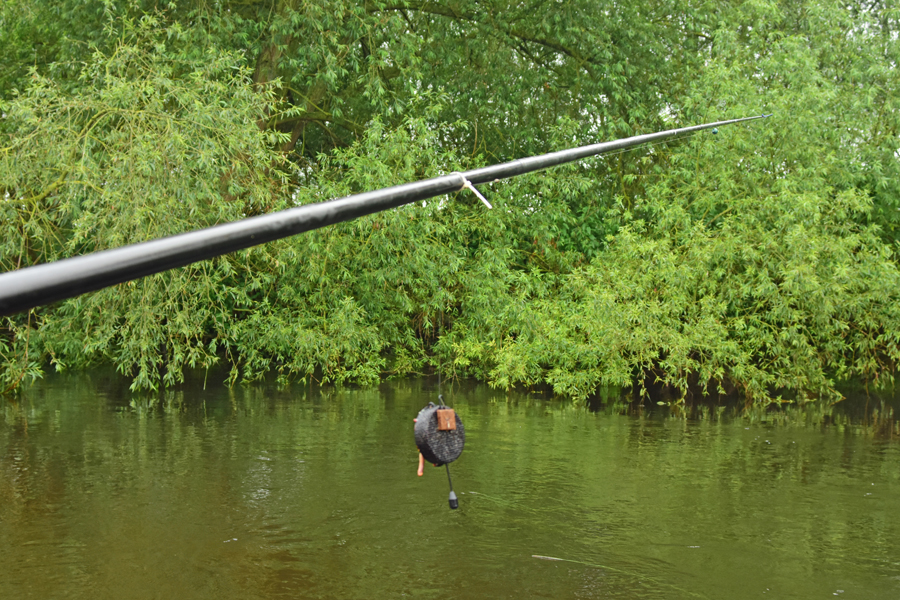


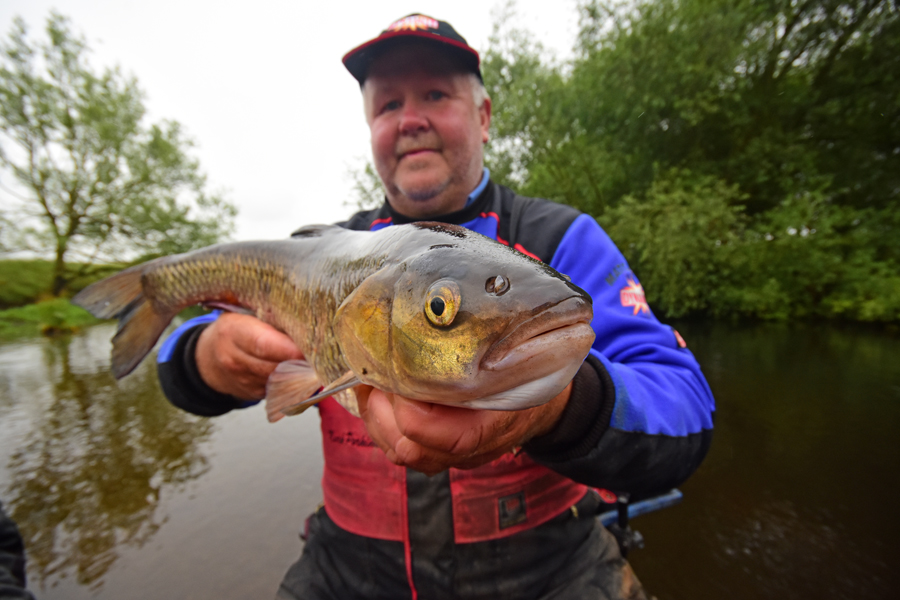


















No comments, start a conversation and make a comment?